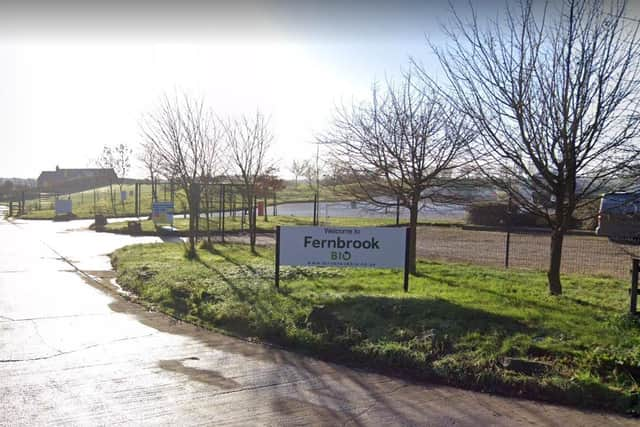Concerns over Fernbrook Bio's plans to more than double the organic waste it puts through anaerobic digestion plant off the A14 near Rothwell
and live on Freeview channel 276
A town council is ‘very much against’ a company’s plan to more than double the organic waste it puts through its anaerobic digestion plant every year.
Fernbrook Bio currently has permission to put 49,000 tonnes of waste through its plant off the A14 near Rothwell every year but it wants to increase that to 100,000 tonnes and carry out other upgrades.
Advertisement
Hide AdAdvertisement
Hide AdBut Rothwell Town Council said residents have suffered ‘ongoing odour issues’ for years.


One resident wrote to it last year complaining about the ‘absolutely disgusting stench [that] ruined much of our spring and summer’ that left them ‘feeling physically sick’ at times.
Fernbrook Bio said work to improve its systems would better contain the smells.
North Northamptonshire Council (NNC) planning officers have said the plan would make more renewable energy throughout the production of biomethane and a digestate and should be allowed.
Advertisement
Hide AdAdvertisement
Hide AdThorpe Malsor Parish Council has not registered an official objection against the work.
But it said it was ‘concerned’ that the increased throughput would grow the risk of pollution there and potentially to the Thorpe Malsor Reservoir, which is about 500 metres from the site.
It also asked for NNC to ensure any work would be ‘robust and sufficient to prevent the escape of these highly unpleasant smells which are causing considerable nuisance.’
The Environment Agency has not objected to the upgrades and other work.
The plant has operated since October 2010.
Advertisement
Hide AdAdvertisement
Hide AdNNC officers have recommended the changes are approved by the authority’s strategic planning committee at a meeting next Monday.
While they said the plan would have ‘some landscape and visual impact’, they said they would be ‘limited and on balance, considered acceptable given the site’s location, existing buildings and plant within the facilities and those nearby.’